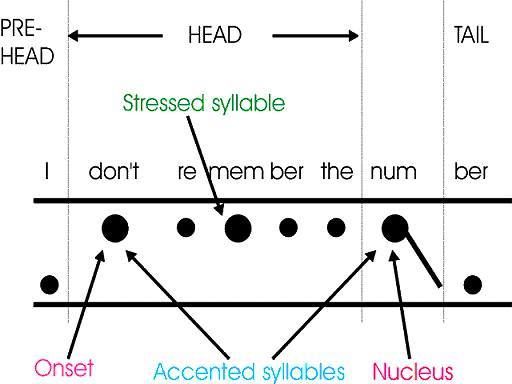Teaching grammar is probably one of the most challenging aspects of teaching a foreign language. We need to make sure the students assimilate what we are trying to deliver and feel comfortable using it on a day-to-day basis. In this article, we will have a look at different procedures and techniques of teaching grammar.
PPP
PPP framework is a common practice to have a better understanding of the target structure and teaching it in an organized way. PPP stands for:
Presentation — introducing the language point, making sure the students understand its usage and formation.
Practice — putting the target structure into practice through exercises (gap fill, multiple choice, finish the sentence for a freer practice, etc.).
Production — creating a context for the students to use the target structure (discussion questions using the target language point, board games on different tense forms, role plays using the practiced structure, etc.)
At every stage of teaching grammar (presentation, practice, production) the work is organised in the micro three-phase framework.This ensures the assimilation of the language and its future application by the student in relevant situations.
Now, let’s look at some other ways of grammar presentation below which have worked for many classes, mine included.
MFP
As it is in case of vocabulary introduction, grammar can/should also be introduced using this scheme. Let’s say, we are introducing the present simple tense. Elicit the meaning first by giving several examples, just like in Guided discovery. Here are the examples to make this clear:
E.g.
- I start my work every day at 9 am.
- My brother always drinks coffee in the morning.
- My friends often visit me on weekends.
Asking CCQs (Content checking questions) is the next step.
E.g.
- Do the sentences show an action happening now, normally or in the past? (NORMALLY)
- What keywords do you see showing that it’s an action happening normally? (EVERY DAY, IN THE MORNING, ON WEEKENDS)
Among anticipated problems we can mention that students might fail to guess the answer. Like they say ‘A little hint never killed nobody’. We can guide the students to the right answer and let them try again.
As soon as the students get the meaning of when the tense is used we can pass to the form.
E.g.
- Which is the verb (action) in each sentence? (WORK, DRINKS, VISIT)
- Is the verb in the present or past form? (PRESENT)
Same strategy can be applied when working on the question and negative forms.
E.g.
- Is the sentence a statement (+), a question (?), or a negative (-) one? (A STATEMENT)
- How can we make it a question? (DO, DOES)
- How can we make it negative? (DON’T, DOESN’T)
Same here, if the students need a hint, it is OK to give one.
Pronunciation kicks in next, asking the students to repeat the sentences and working on intonation, word stress and pronunciation of the 3rd person singular forms. Intonation charts are welcome to highlight the stressed words, rising/falling tomes, etc. An example can be seen below.

This order can also be varied as in case of vocabulary introduction depending on the aim, and the level of the learners.
Comparison
Another way to present a language point is through comparing it to other tenses. This works for levels that have already covered the basic tenses (present/past simple) and can use that knowledge to build new information. This advantage of this method is that it gives you a chance to revise the previous item and help the students to analyze the new one on their own.
Let’s say we are presenting present perfect to B1 level of students. At this level they mainly work with the meaning — action in the recent past without specifying time.
E.g.
- I lived in England last year.
- I have lived in England.
Elicitation comes in:
- Are the sentences in the present or past tense? (PAST)
- How do you know they are in the past tense? (LIVED)
- Do you know when the person lived in England in the first sentence? (YES, LAST YEAR)
- Do you know when the person lived in England in the second sentence? (NO)
- Does the second sentence specify the time when the person lived in England or does show an action that happened some time in his/her life? (SOME TIME IN HIS/HER life)
- So, when do we use the second sentence? (WHEN WE TALK ABOUT A PAST EVENT WITHOUT MENTIONING THE TIME)
Once again, hints can be provided considering the students might have difficulties at some point. Next, the stages of form and pronunciation can be implemented like in the above mentioned cases.
Timelines

This is a well tested technique to make sure students can locate the events from past/present/future. It is a great tool for visual learners and can be used to introduce a grammar point. How? By showing the timeline and a sentence, eliciting the meaning and usage of the target structure. This works especially well when introducing two tenses at the same time, like past simple vs. past continuous or past simple vs. past perfect.
Total physical response
This is a very fun type of activity that can help the students, especially the young learners to grasp a new material when learning grammar. In my experience, it works well with present/past continuous tenses and can serve as both an introduction to the tense and a revision.
As for the Introduction, we can have some task cards for the students to perform in class; “Go and touch the wall”, “Stand up and sit down”, “Say hello to 5 people in the room”, etc. Students, having no idea why they are doing what they are doing can seem a bit confused but excited at the same time. Later on, the teacher can ask: “What was Mike doing?” and try to elicit the sentence “Mike was saying hello to different people.” Next stages go the same way as before.
As for the revision, we can have action cards, called “Mime the sentence”, have one student mime the action on the card, and the others guess the action using the correct tense form — the present continuous to describe the action at that moment “You are drinking coffee”, or reporting back to class “He was drinking coffee.” Same can be set as a pair/ group activity.

What other activities do you use? Let’s share and find the most creative one!






 Вероника Аветисян
Вероника Аветисян 
 Маргарита Аветисян
Маргарита Аветисян 


